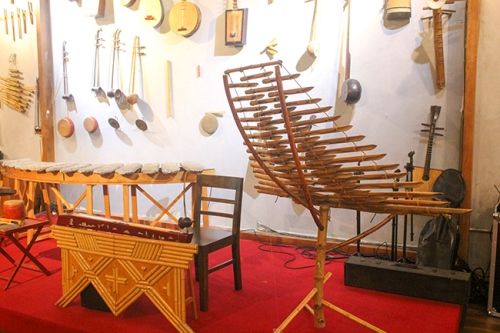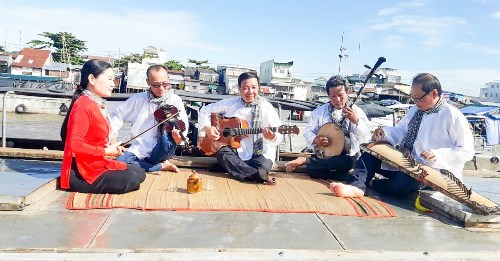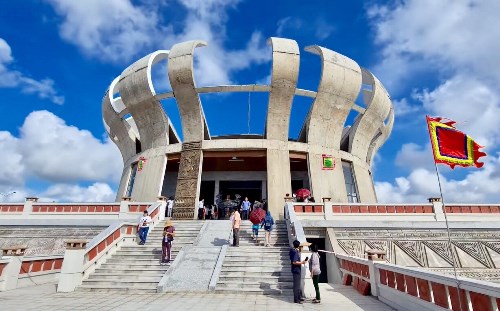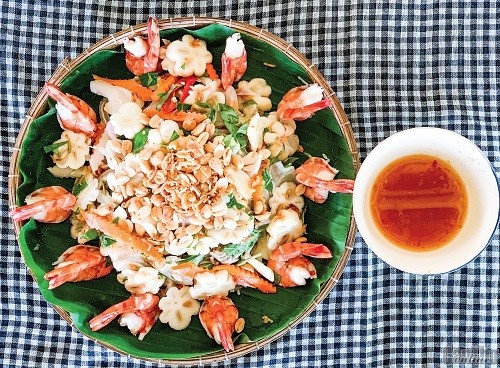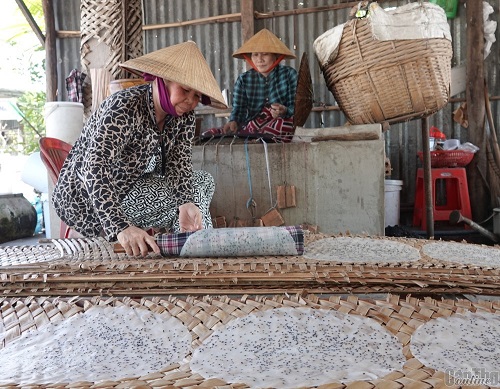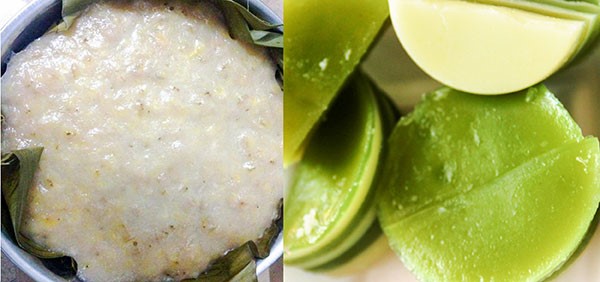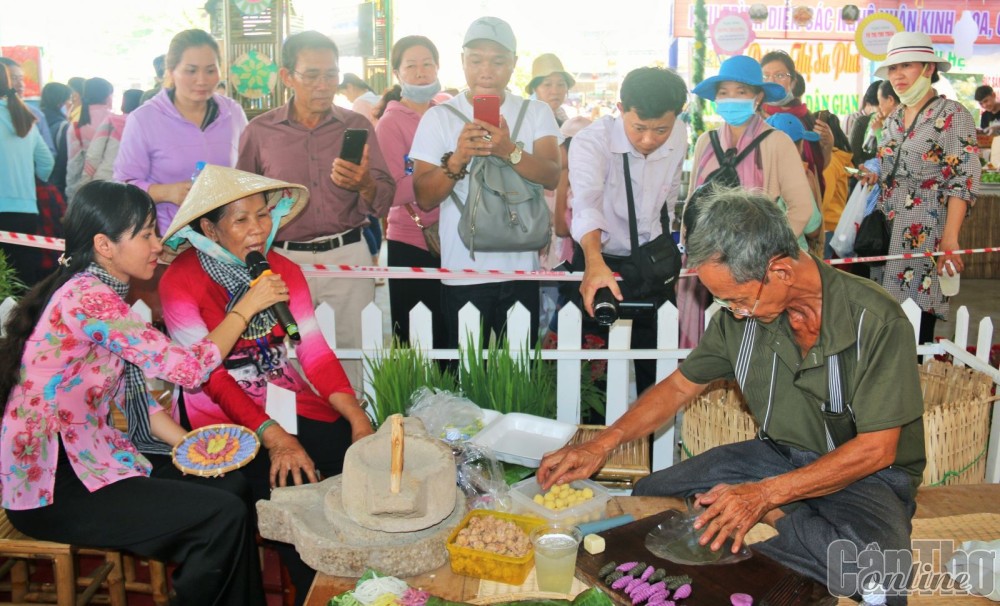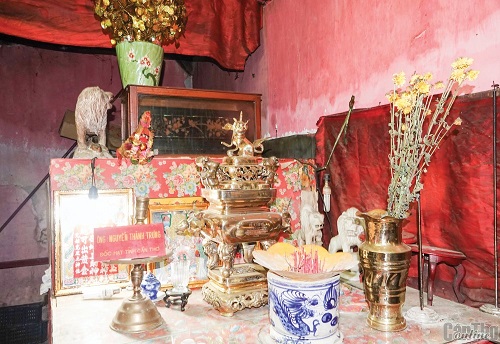
A trip back to Tay Do over 80 years ago
Nam Ky Tuan Bao was one of the most important newspapers in Southern Vietnam before 1945, run by Ho Van Trung, also known as writer Ho Bieu Chanh. It was published weekly on Thursday, with the first issue on September 3rd, 1942, and ceased publication in June 1944 after a total of 85 issues printed and distributed. Researcher Nguyen Khue explained the reasons for Nam Ky Tuan Bao ceasing publication in his work "Portrait of Ho Bieu Chanh": "Partly due to paper shortages, partly due to Ho Bieu Chanh's dissatisfaction with the director of the Information and Propaganda Department." Nam Ky Tuan Bao collaborated with famous writers across the country such as Thuong Tan Thi, Dang Thuc Lieng, Truc Ha, Ngac Xuyen, Le Tho Xuan, Le Van Ngon, Khuong Viet, Thieu Son, Dao Duy Anh, Hoang Phe...
Nam Ky Tuan Bao had a very rich variety of sections such as discussion, research, criticism, translation, novels, sports, domestic news, and international news... Many issues of Nam Ky Tuan Bao also developed themes such as family, ancestor worship or important events such as commemorating the death of poet Nguyen Dinh Chieu... The orientation of Nam Ky Tuan Bao was to revive morality and disseminate culture. In the introductory words of the first issue, writer Ho Bieu Chanh emphasized: "Reviving the pure customs passed down by our ancestors that in recent times our nation has neglected and no longer wished to focus on. Assisting intellectuals to open paths of learning for our nation, learning about literature, occupations, ethics, spirit, and will."
Regarding the writer and journalist Khuong Viet, his real name was Ly Vinh Khuong (1912-1978), from Bai Xau village, My Xuyen district, Soc Trang province. He studied diligently and achieved success, working for many years at the National Library, and was a renowned writer. He collaborated with many newspapers of the time, making effective contributions to Nam Ky Tuan Bao. His numerous travel writings within the country, Asia, and Europe attracted many readers. "Twenty-Five Days in Search of Ancient Traces" was a valuable travelogue and research work.
In the section "Straight to Tay Do", the author visited the tomb of Cham Hoang, located in Lo Gach, My Hung, Tan An village, built according to Islamic architecture. This tomb site still exists today, although it has been renovated and changed slightly, currently located the dike of Can Tho River, taking a right turn a few hundred meters after Quang Trung Bridge, in Hung Phu ward, Cai Rang district. The author also visited the tomb of Bui Huu Nghia, the valedictorian, and expressed sadness at its desolate state. Thanks to this article, in 1943 the Can Tho Education Encouragement Association mobilized funds to restore the Valedictorian’s tomb. This made the tomb area tidier before Can Tho City constructed and inaugurated the Bui Huu Nghia Memorial Park in 2013.
The author visited Nam Nha Duong on the dike of Binh Thuy River, toured the Binh Thuy market, and a few nearby ancient sites. Then, going around Ba Xe Junction to Phong Dien village, he met an elderly man over 80 years old who, despite being bedridden due to illness, remained lucid and showed him documents from the Gia Long and Minh Mang eras, saying: "Certainly we were not disappointed and did not regret riding over 20 kilometers."
Regarding Education Commissioner Nguyen Thanh Trung

The current tomb of Education Commissioner Nguyen Thanh Trung and his wife.
Journalist Khuong Viet said that coming from Saigon down to Can Tho, he made an effort to visit the outer citadel areas to see if Can Tho, the capital of Hau Giang area, still retained any ancient sites.
The first place he went was about 4km from the citadel (roughly understood as the current center of Tan An ward), in Xuan Hoa hamlet, Tan An village, with a worship house and tomb of Mr. Trung. The author was not pleased by the grandness and renovation of this worship house and tomb complex; but when reading the biography engraved on the marble stele in front of the courtyard, that disappointment gradually faded. According to journalist Khuong Viet, Nguyen Thanh Trung was from Cai Lay, My Tho province, passed the Bachelor's exam, previously serving as a Teacher (Dịnh Vien - Can Tho), then appointed as an officer and later District Head of Bao An (now Ben Tre province), then serving as Education Commissioner of An Giang province (including present-day Can Tho). "He was a distinguished scholar of the old wave," journalist Khuong Viet assessed. The author also noted that when he visited the worship house and tomb in 1942, the items had accumulated dust and cobwebs, and he only learned upon asking that the couple did not have children to succeed them, so the Xuan Hoa hamlet officials took care of worship duties.
Following the description by journalist Khuong Viet, we spent a considerable amount of time searching, and the result was satisfying when we set foot in the tomb of Mr. Trung. We lit incense there. The worship area described in the travelogue no longer exists; only the tomb and valuable stone tablets remain. The tomb of Mr.Trung now belongs to the land of a household in the alley of Tam Vu Street, Hung Loi Ward, Ninh Kieu District, near Tam Vu Market, surrounded by rows of small houses, so it was challenging for us to find it, but the homeowner agreed to guide us.
An interesting document is the current Tầm Vu Market area, which used to be Xuan Hoa hamlet, Tan An village, considered part of Can Tho's rural area. The stone tablet recording Mr. Trung's merits remains intact to this day, written in Chinese–Nom (Vietnamese) scripts, quite legible. In the introductory part, there is a passage praising him: "He possessed the refined temperament of the Southern land, and his eloquence surpassed all. He deserved to be a virtuous and talented figure... His honest governance brought joy and trust to the people." About his family, the stone tablet states: "He married the noble lady Bui, an inner virtuous lady. He was busy with teaching, his official duties, and Lady Bui took care of the household affairs, which gradually became orderly." From the Chinese-Nom script on the tombstone, we noted that the lady's name was Bui Thi Cau.
In the "Geography of Tien Giang Province," there is a passage that states: "In Dinh Tuong, there is Mr. Nguyen Thanh Trung, who served as an Education Commissioner in An Giang. When the French colonialists pacified all of South Vietnam, he resided there permanently." The book also mentions the tragedy of his life, as he had no offspring, so he composed his own couplets and admonished himself:
“Tu vi nang toan hieu, than vi nang toan trung, mot the nan tiem than tu dao / Sinh vô hien u tien, tu vo truyen u hau, hon truyen khong tac tu sinh nhan” (brief translation: “Being a child has not fulfilled filial piety, being a servant has not fulfilled loyalty, as death approaches, being a servant becomes more and more difficult. Living without establishing a good reputation in this world, and dying without leaving a legacy for the future, the turmoil of life and death is difficult to navigate".
In his later years, he participated in the Southern Region Administrative Council. Many people ridiculed him for this involvement.
Regarding his education, we found in the “Quoc trieu huong khoa luc” (National Civil Service Examination Records) that he participated in the Examination of the Nham Ty Year (year of the mouse), the 5th year of Tu Duc's reign, in 1852, at Gia Dinh Examination Center, and achieved the title of Salutatorian. The note reads: "Nguyen Thanh Trung. From My Trang hamlet, Kien Dang district. Held the position of Education Commissioner". The valedictorian of this examination at Gia Dinh Examination Center was Nguyen Huu Huan, known as The Valedictorian Huan, a renowned anti-French intellectual.
Imprint with Can Tho, Mr. Trung engaged in literary exchanges within the Tao Dan Ba Đo literary group and had literary friendships with the Valedictorian Bùi Hữu Nghĩa. He was a generous person, often assisting the community, both in the village and the hamlet. According to Mr. Tu Luong from the Thoi Binh Temple Administration Board, Mr. Trung's land extended over the area of the old Giua Market, roughly from Tam Vu Market to the current Xuan Khanh Market. He was known for aiding the poor, particularly through land donations and financial support for temple construction. In the present-day Thoi Binh Temple, there is an altar dedicated to Mr. Trưng, with the title of "Nhan Than" (Human Deity), and it's well-regarded. Unfortunately, due to a transcription error, his title is listed as "Doc hat Nguyen Thanh Trung" instead of "Doc hoc Nguyen Thanh Trung." The temple also houses a valuable wooden box believed to contain an edict regarding Mr. Trưng's appointment. Regrettably, we were unable to open the box and ascertain its contents.
Regarding the altar for Mr. Trưng within the Thoi Binh Temple, we speculate whether he might have been the former Nhan Than (Human Deity) for the Tan An Temple. This conjecture is based on historical records that indicate the Tan An Temple used to be located near Giua Market, in close proximity to the house, worship house, and tomb of Mr. Trưng. Furthermore, Mr. Trưng made significant contributions to this temple. Over time, due to various circumstances, the Tan An Temple ceased to exist, and the Sac Than (Spirit Deity) and the temple altar were relocated to the Thoi Binh Temple for communal worship, leading to a period when it was referred to as the Thoi Binh - Tan An Temple. After the construction of the new Tan An Temple at the Cai Khe roundabout, the Sac Than of the Tan An Temple was eventually relocated there. Therefore, we posit that the altar and ritual items dedicated to Education Commissioner Nguyen Thanh Trung are remnants of the old Tan An Temple.
In this article, we aim to bring to light a historical figure of Can Tho, as well as share insights from Khuong Viet's travelogue, without passing judgment on the merits or faults of those from the past. The traces of the past not only represent memories but also serve as a part of the local history and its people.
Source: Can Tho News - Translated by Hoang Dat





